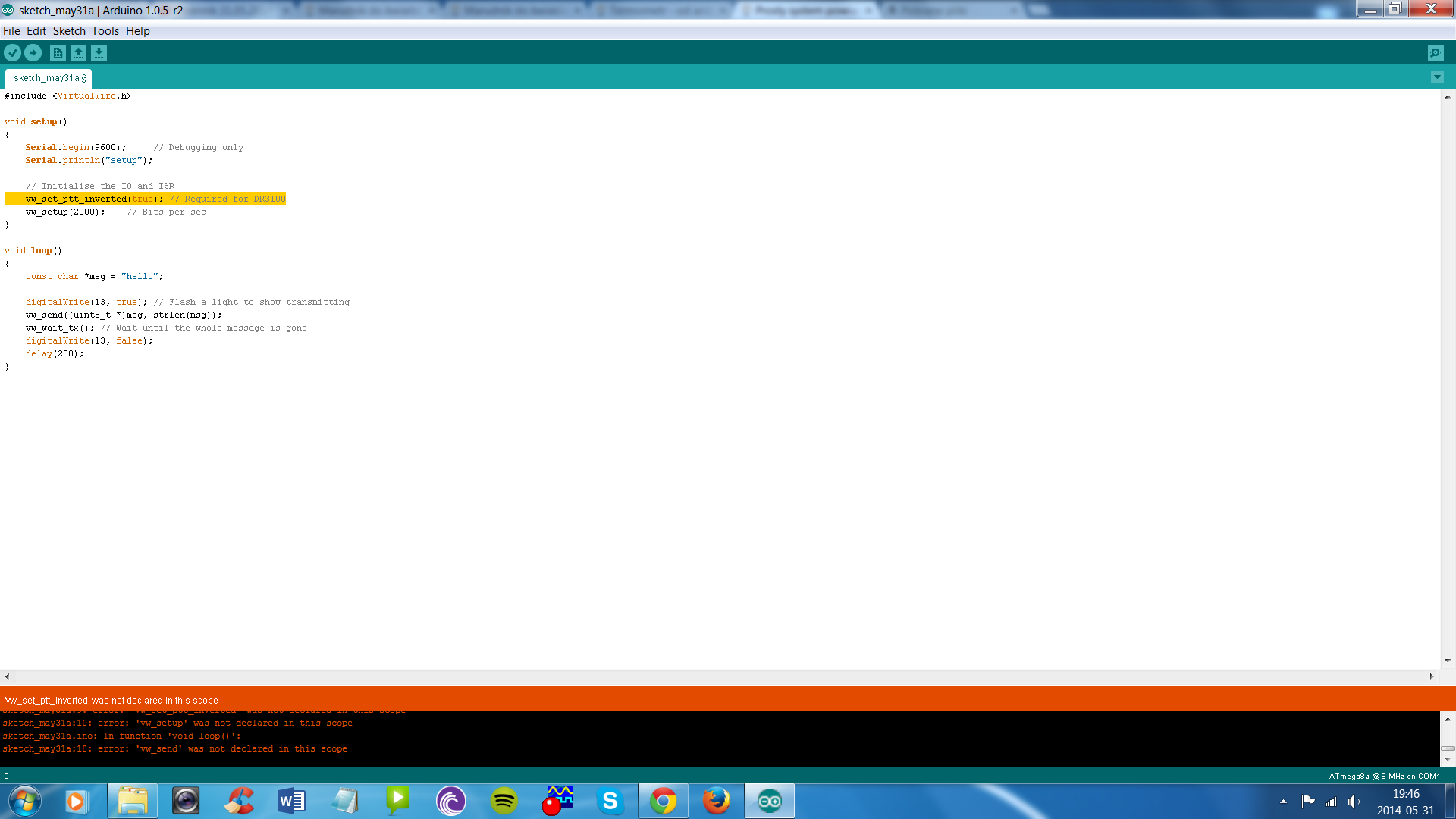
- ARDUINO VIRTUAL WIRE LIBRARY HOW TO
- ARDUINO VIRTUAL WIRE LIBRARY CODE
- ARDUINO VIRTUAL WIRE LIBRARY FREE
With that done, we then proceed to the void setup() function.

We also declare the pin of the Arduino to which the push-button is connected. Next, we create variables that will be used to hold different data like the characters to be sent by the transmitter, the buffer length, and the buffer name. We start as usual by importing the libraries that we will use, which in this case, is just the VirtualWire library. As mentioned during the introduction the sketch for the transmitter will simply send commands (a for ON, b for OFF) to the receiver when off.
ARDUINO VIRTUAL WIRE LIBRARY CODE
We will start with the code for the transmitter. Just like the schematics, we will write two sketches for this project one for the transmitter and the other for the receiver. With the library installed we can now proceed to write the code. The Virtualwire library comprises functions that allow us to perform actions like set the transmission power of the RF modules, encode the data, etc., generally reducing the amount of code we need to write to interact with the RF Modules. The library can be installed via the Arduino library manager or by downloading the library from the attached link and installing it by extracting it into the Arduino Libraries folder. The Code for this project is heavily dependent on the popular Virtual Wire Library. Go over the connections once more to ensure everything is as it should then proceed to the code section. The pin-to-pin connection between the Arduino and the RF Receiver module is described below: The pin-to-pin connection between the Arduino and the RF transmitter module is described below:įor the Receiver, we will connect a LED to the Arduino in addition to the Receiver of the 315MHz transceiver as shown in the image below. The transmitter schematics is quite simple, we only need to connect a push-button and the transmitter of the 315MHz transceiver to the Arduino as shown in the image below. The image of the short-range RF modules will be used since the connection is the same and the Long-range RF modules do not have a fritzing package. One will serve as the transmitter while the other will serve as the receiver as such, we have two schematics.

SchematicsĪs mentioned during the introduction, we will essentially build two projects.
ARDUINO VIRTUAL WIRE LIBRARY FREE
If you don’t have an Arduino Uno available feel free to use any Arduino compatible board. Two Arduino boards are required because we will build a complete system with a transmitter and receiver. This can be an AC-DC wall wart, USB power bank, 9V battery, any power source to power the transmitter.
ARDUINO VIRTUAL WIRE LIBRARY HOW TO
/cdn.vox-cdn.com/uploads/chorus_image/image/52092891/steam_vr_games_photo_1920.0.jpeg)
The attainable transmitting power of the modules depends on the voltage applied at it’s VCC pin. The new transceivers work the same way as the cheaper modules, maintaining the same pin configuration/layout, support the same libraries (like the VirtualWire library for Arduino) but the new modules, however, have a greater power output and a solid, convenient PCB antenna which increases range while also keeping things neat. To solve this and give makers more option and value, PMD Way developed these new 315/415 Mhz transceivers. Short-range RF Transceivers like the 433MHz transmitters discussed in one of our previous post are very popular among DIY hobbyist and makers, however, their short-range was a bottleneck for users as they barely offer signal coverage for an area bigger than a standard room.


 0 kommentar(er)
0 kommentar(er)
